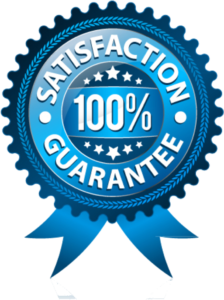Indirect costs are costs that cannot be traced to cost objects in an economically feasible way.
1. Indirect
costs are costs that cannot be traced to cost objects in an economically
feasible way.
2. To
motivate engineers to design simpler products, costs for production,
distribution, and customer service may be included in product-cost estimates.
3. For
external reporting, inventoriable costs under GAAP sometimes include R&D
costs.
Under
GAAP, inventoriable costs include only the costs of producing and sometimes the
design costs of the product.
4. Today,
companies are simplifying their cost systems and moving toward less-detailed
and less-complex cost allocation bases.
.
5. When
using the cause-and-effect criterion, cost drivers are selected as the cost
allocation bases.
6. The
ability-to-bear criterion is considered superior when the purpose of cost
allocation is motivation.
7. The
benefits of implementing a more-complex cost allocation system are relatively
easy to quantify for application of the cost-benefit approach.
9. Full
allocation of corporate costs to divisions is justified when the notion of
controllability is applied.
10. When
there is a lesser degree of homogeneity, fewer cost pools are required to
accurately explain the use of company resources.
11. If
a cost pool is homogeneous, the cost allocations using that pool will be the
same as they would be if costs of each individual activity in that pool were
allocated separately.
12. Facility-sustaining
costs do not have a cause-and-effect relationship with individual products.
13. An
individual cost item can be simultaneously a direct cost of one cost object and
an indirect cost of another cost object.
14. All
customers are equally important to a company and should receive equal levels of
attention.
15. The
purpose of price discounting is to encourage increases in customer purchases.
16. There
are two elements that influence customer profitability revenues and costs.
17. Companies
that only record the invoice price can usually track the magnitude of price
discounting.
18. An
activity-based costing system may focus on customers rather than products.
19. A
customer cost hierarchy may include distribution-channel costs.
20. The
cost of visiting customers is an example of a customer output unit-level cost.
21. In
general, distribution-channel costs are more easily influenced by customer
actions than customer batch-level costs.
22. If
one of four distribution channels is discontinued, corporate-sustaining costs
such as general administration costs will most likely be reduced by 25%.
23. To
more accurately assess customer profitability, corporate-sustaining costs
should be allocated.
24. It
is common to find that a small number of customers generate a high percentage
of operating income.
25. The
static-budget variance is the difference between an actual result and a
budgeted amount in the static budget.
26. The
flexible-budget variance is the difference between an actual result and the
flexible-budget amount based on the level of output actually achieved in the
budget period.
27. Additional
insight can be gained by dividing the sales-mix variance into the
flexible-budget variance and the sales-volume variance.
28. A
favorable sales-mix variance arises when the actual sales-mix percentage is
less than the budgeted sales-mix percentage.
29. A
composite unit is a hypothetical unit with weights based on the mix of
individual units.
30. The
sales-mix variance can be explained in terms of the budgeted contribution
margin per composite unit of the sales mix.
1. Indirect
costs are costs that cannot be traced to cost objects in an economically
feasible way. 2. To
motivate engineers to design simpler products, costs for production,
distribution, and customer service may be included in product-cost estimates. 3. For
external reporting, inventoriable costs under GAAP sometimes include R&D
costs. Under
GAAP, inventoriable costs include only the costs of producing and sometimes the
design costs of the product.4. Today,
companies are simplifying their cost systems and moving toward less-detailed
and less-complex cost allocation bases. .5. When
using the cause-and-effect criterion, cost drivers are selected as the cost
allocation bases. 6. The
ability-to-bear criterion is considered superior when the purpose of cost
allocation is motivation. 7. The
benefits of implementing a more-complex cost allocation system are relatively
easy to quantify for application of the cost-benefit approach. 9. Full
allocation of corporate costs to divisions is justified when the notion of
controllability is applied. 10. When
there is a lesser degree of homogeneity, fewer cost pools are required to
accurately explain the use of company resources. 11. If
a cost pool is homogeneous, the cost allocations using that pool will be the
same as they would be if costs of each individual activity in that pool were
allocated separately. 12. Facility-sustaining
costs do not have a cause-and-effect relationship with individual products. 13. An
individual cost item can be simultaneously a direct cost of one cost object and
an indirect cost of another cost object. 14. All
customers are equally important to a company and should receive equal levels of
attention. 15. The
purpose of price discounting is to encourage increases in customer purchases. 16. There
are two elements that influence customer profitability revenues and costs. 17. Companies
that only record the invoice price can usually track the magnitude of price
discounting. 18. An
activity-based costing system may focus on customers rather than products. 19. A
customer cost hierarchy may include distribution-channel costs. 20. The
cost of visiting customers is an example of a customer output unit-level cost. 21. In
general, distribution-channel costs are more easily influenced by customer
actions than customer batch-level costs. 22. If
one of four distribution channels is discontinued, corporate-sustaining costs
such as general administration costs will most likely be reduced by 25%. 23. To
more accurately assess customer profitability, corporate-sustaining costs
should be allocated. 24. It
is common to find that a small number of customers generate a high percentage
of operating income. 25. The
static-budget variance is the difference between an actual result and a
budgeted amount in the static budget.26. The
flexible-budget variance is the difference between an actual result and the
flexible-budget amount based on the level of output actually achieved in the
budget period. 27. Additional
insight can be gained by dividing the sales-mix variance into the
flexible-budget variance and the sales-volume variance. 28. A
favorable sales-mix variance arises when the actual sales-mix percentage is
less than the budgeted sales-mix percentage. 29. A
composite unit is a hypothetical unit with weights based on the mix of
individual units. 30. The
sales-mix variance can be explained in terms of the budgeted contribution
margin per composite unit of the sales mix.




